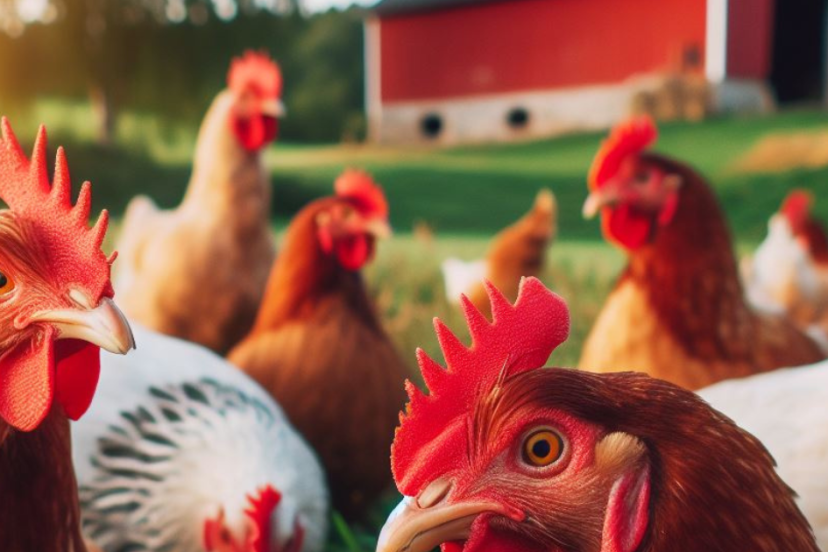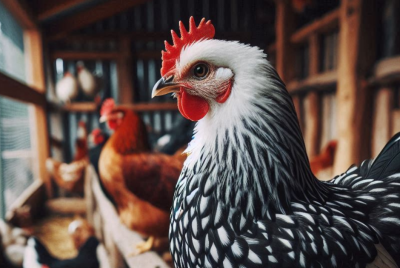Introduction
Welcome to the wonderful world of Red Star chickens! These remarkable birds have captured the hearts of poultry enthusiasts with their exceptional egg-laying abilities, charming personalities, and suitability for
backyard flocks. As an enthusiast and advisor, I invite you to join me on a journey to discover the joys of raising Red Star chickens. In this article, we will explore their unique qualities, provide practical tips for their care, and delve into the reasons why they make an excellent choice for your flock.
The Wonderful World of Red Star Chickens
Red Star chickens, also known as Red Sex-Links or Red Comets, are a hybrid breed known for their outstanding egg-laying capabilities and appealing temperament. Here’s why they stand out among other chicken breeds:
Prolific Layers
If you’re looking for a consistent supply of fresh eggs, they won’t disappoint. These hens are renowned for their exceptional egg production, consistently laying large brown eggs. On average, a single Red Star hen can lay around 250 to 300 eggs per year, making them a top choice for those seeking abundant egg yields.
Charming Personalities
Beyond their egg-laying prowess, Red Star chickens possess friendly and engaging personalities. They are known for their docile nature, making them easy to handle and suitable for families with children. Their inquisitive and sociable behavior adds an extra level of enjoyment to raising these feathered stars.
Hardiness and Adaptability
Red Star chickens are hardy birds, capable of adapting to various climates and environments. They can withstand both hot and cold temperatures, making them suitable for backyard flocks in diverse geographic locations. Their robust health and resilience contribute to their longevity and overall well-being.
Tips for Raising Happy and Healthy Red Star Chickens
To ensure the well-being of your Red Star chickens and optimize their egg production, here are some practical tips to keep in mind:
Housing and Space Requirements
Provide a secure and spacious coop. The coop should protect them from predators, offer proper
ventilation, and provide adequate nesting boxes and roosting perches. Aim for at least 4 square feet of space per bird in the coop, and provide a suitable outdoor area for them to roam.
Nutritious Diet
A well-balanced diet is crucial for the health and egg production. Offer a high-quality layer feed containing essential nutrients, minerals, and vitamins. Supplement their diet with fresh fruits, vegetables, and occasional treats like mealworms. Ensure a constant supply of clean water and provide grit to aid digestion.
Health Care and Preventive Measures
Regularly monitor the health and schedule routine check-ups with a veterinarian experienced in poultry care. Implement a vaccination program recommended for your region to protect against common poultry diseases. Maintain a clean coop, practice good hygiene, and employ biosecurity measures to minimize the risk of infections.
Reasons to Choose Red Star Chickens for Your Flock
Still contemplating whether Red Star chickens are the right choice for your flock? Consider the following reasons why they are a fantastic addition to any backyard:
Exceptional Egg-Laying Abilities
Red Star chickens are bred for egg production, and they excel in this area. Their ability to consistently lay a large number of high-quality eggs ensures a bountiful supply for your family or potentially even for small-scale egg sales. If you appreciate the convenience of fresh eggs straight from your backyard, Red Star chickens are an ideal choice.
Beginner-Friendly Birds
For novice chicken keepers, Red Star chickens are a perfect match. Their calm and docile temperament, coupled with their low maintenance requirements, make them an excellent breed for beginners. Red Star chickens are forgiving and adaptable, providing a positive experience for those starting their poultry journey.
Beautiful and Eye-Catching Plumage
They boast beautiful plumage that catches the eye. While their name suggests a red color, they typically exhibit a stunning blend of red, brown, and gold feathers. Their attractive appearance adds visual appeal to your backyard flock, making them a delightful sight to behold.
Low Noise Levels
If you live in an urban or suburban area with noise restrictions, Red Star chickens offer a considerate solution. Compared to some other breeds, they are relatively quiet, minimizing the chances of disturbances and maintaining neighborly harmony.
Conclusion: Red Star Chickens
In conclusion, they are a remarkable breed that combines exceptional egg-laying abilities, charming personalities, and adaptability. Their prolific nature ensures a steady supply of delicious eggs for your family, while their friendly disposition makes them enjoyable companions in your backyard. Whether you’re a novice or experienced chicken keeper, Red Star chickens are a fantastic addition to any flock. Embrace the wonders of raising these feathered stars and discover the immense joy they bring to your poultry-keeping journey.
FAQs : Red Star Chickens
1. Can they be free-ranged?
Yes, they can be free-ranged provided you have a secure and predator-proof outdoor area for them. Supervise their free-ranging activities to ensure their safety and prevent them from wandering too far.
2. Do Red Star chickens require special care compared to other breeds?
They have similar care requirements as other chicken breeds. However, their high egg production may necessitate additional calcium supplementation to support strong eggshells. Monitor their health and adjust their diet accordingly.
3. Are they suitable for families with children? Absolutely!
Red Star chickens have a friendly and docile nature, making them ideal for families with children. They can be easily handled and are generally tolerant of gentle interaction.
4. How long do they typically live?
With proper care, Red Star chickens can live for approximately 6 to 8 years. However, their egg production may decline after 2 to 3 years.
5. Can they be kept in small backyard spaces?
Yes, they can adapt well to small backyard spaces. As long as they have enough room to move around comfortably and access to fresh air and natural light, they can thrive in compact environments.
*We may earn a commission from purchases made through our links, at no cost to you. This does not affect our product recommendations. Please see our disclosure to learn more.




